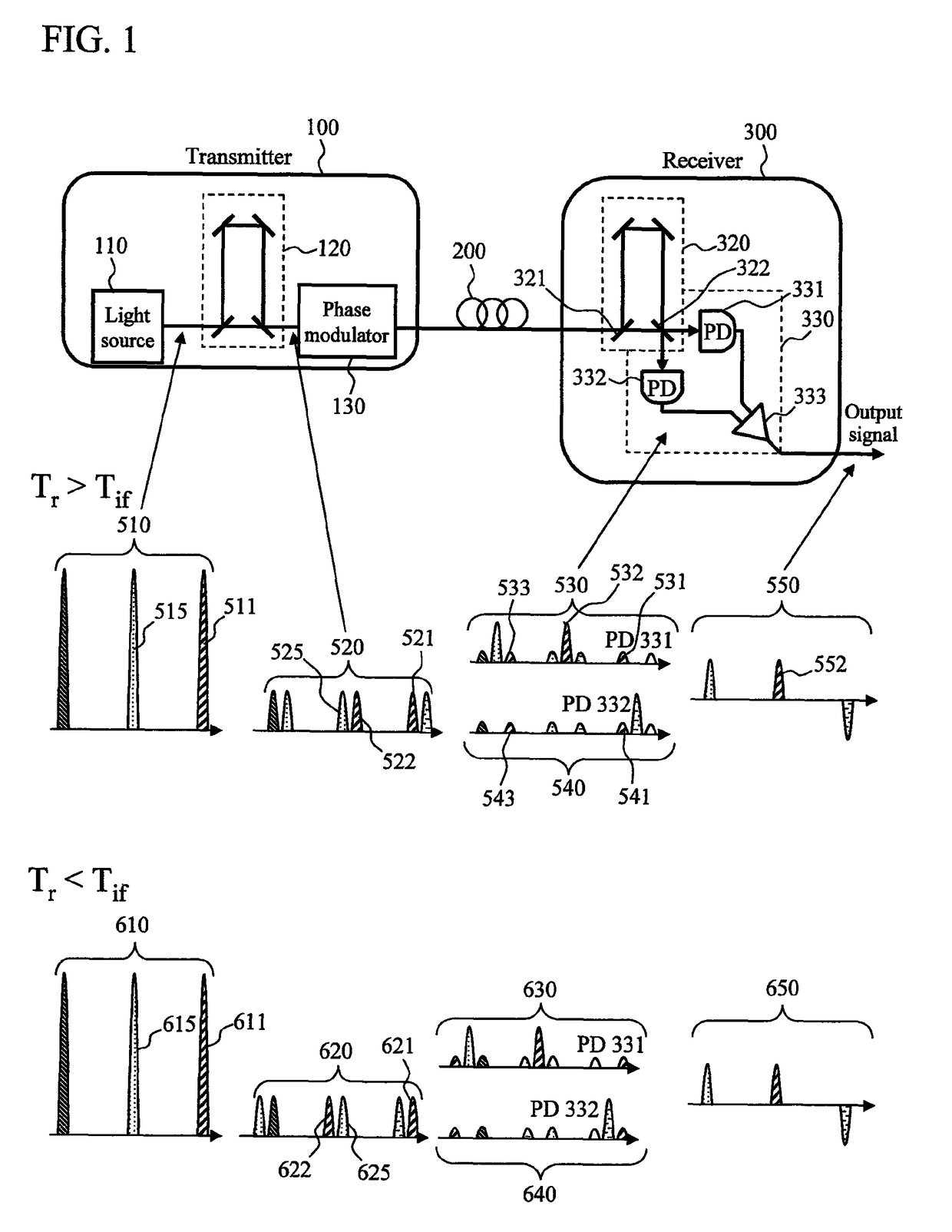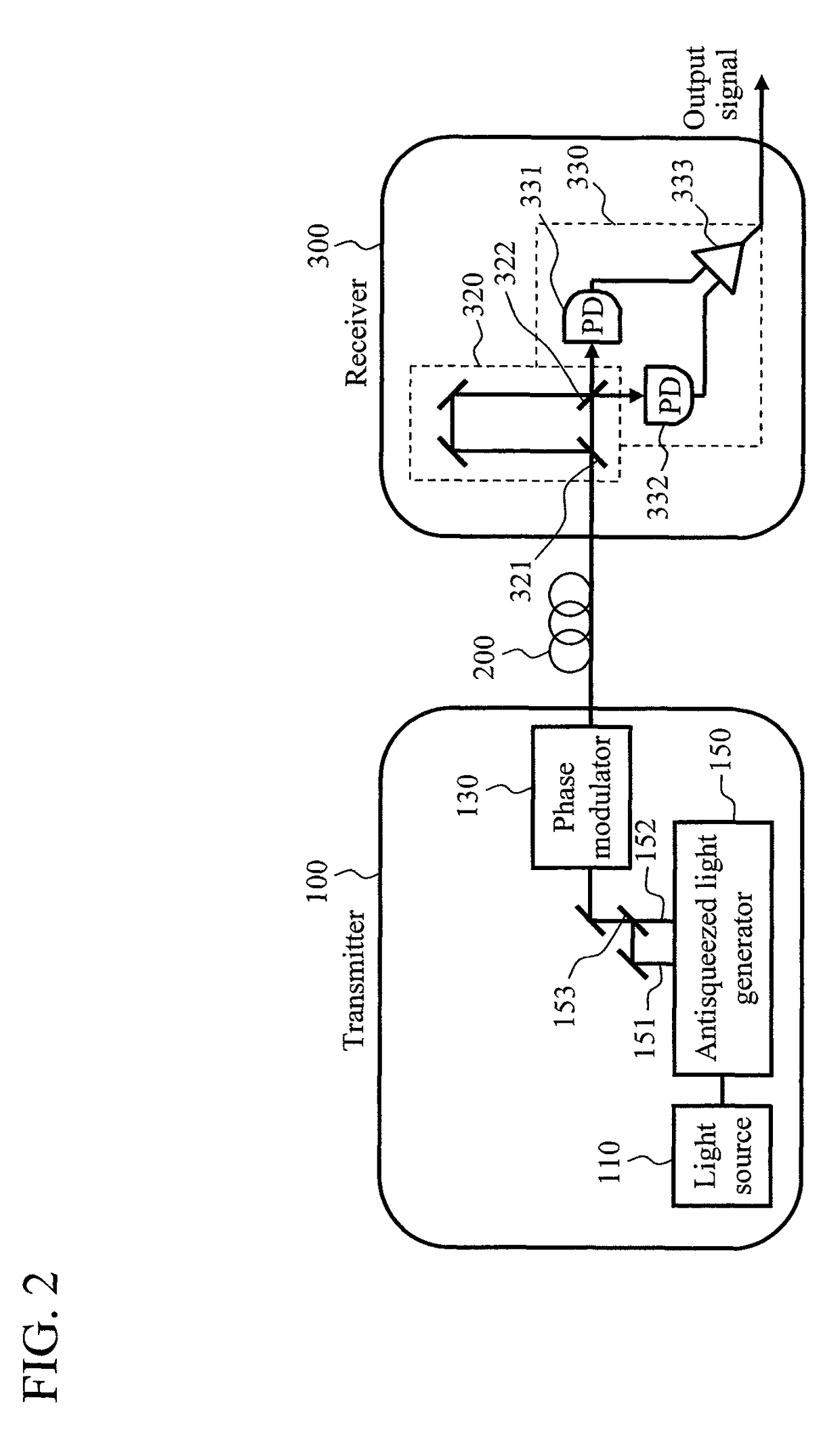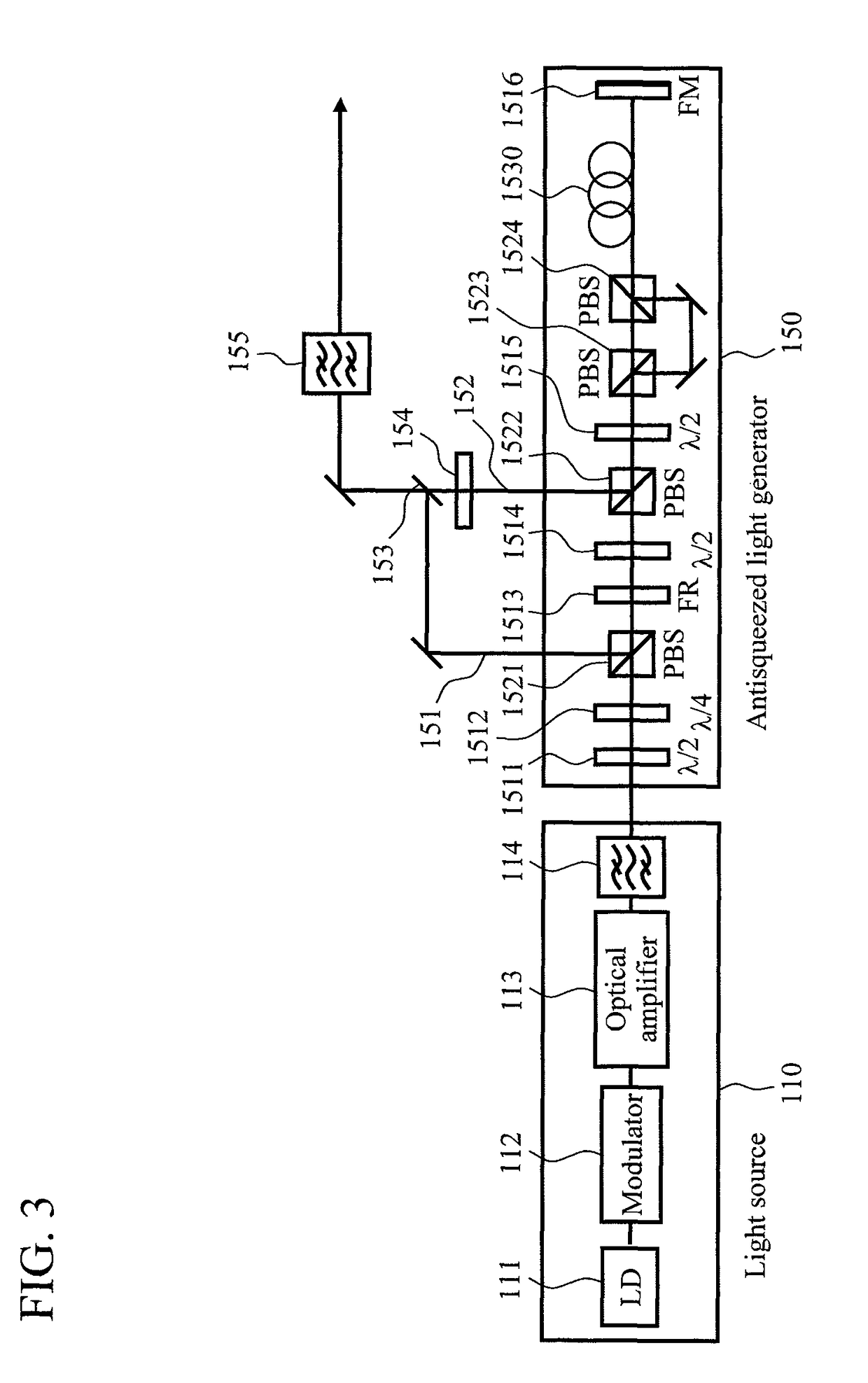Optical transmitting and receiving system
a technology applied in the field of optical transmission and receiving system, can solve the problems of general difficulty in performing psk or dpsk using anti-squeezed light, signal processing speed cannot be increased, signal processing becomes complex, etc., and achieves the effect of simple processing
- Summary
- Abstract
- Description
- Claims
- Application Information
AI Technical Summary
Benefits of technology
Problems solved by technology
Method used
Image
Examples
first embodiment
[0019]FIG. 1 is a block diagram showing an example of the optical transmitting and receiving system according to the present invention. The upper part of FIG. 1 is a system configuration diagram, and the lower part of FIG. 1 is a schematic waveform diagram showing how a train of pulses propagate. A train of optical pulses 510 outputted from a light source 110 are inputted to an asymmetric interferometer 120, where each of the pulses is split into two. The train of optical pulses 510 is thus converted into a train of dual pulses 520. For example, a pulse 511 is split into pulses 521 and 522. The distance between dual pulses (the distance between the pulses 521 and 522, for example) produced in the asymmetric interferometer 120 is longer than half the distance between pulses outputted from the light source 110 (the distance between the pulses 521 and 525, for example). As a result, the rear pulse of the dual pulses is closer to the pulse that is one period behind than to the front pul...
second embodiment
[0025]Consider the case where antisqueezed light (including squeezed light) is used as the low-coherence light. Antisqueezed light can be produced, for example, by using the Kerr effect of an optical fiber (JP Patent Publication (Kokai) No. 2006-191410). In the method using an optical fiber, when pump light enters the optical fiber, antisqueezed light and used pump light are obtained as the output. In the first embodiment, the asymmetric interferometer provided in the transmitter converts a single pulse into dual pulses. One of dual pulses may be antisqueezed light and the other one of the dual pulses may be used pump light. In the present invention, one of the dual pulses serves as reference light in the receiver, and the used pump light is suitable for reference light because the phase fluctuation of the used pump light is smaller than that of antisqueezed light.
[0026]FIG. 2 is a block diagram of the optical transmitting and receiving system according to this embodiment in which d...
third embodiment
[0032]The configuration of the receiver 300 shown in FIG. 1 is used in the case where signals are superimposed in the DPSK coding format, and includes a set of the asymmetric interferometer 320 and the balanced detector 330. When signals are superimposed in the DQPSK coding format, another set of asymmetric interferometer and balanced detector are required. An example of such a configuration is shown in FIG. 4. Asymmetric interferometers 320 and 325 are set with 90-degree different phase so that the balanced detectors 330 and 335 detect quadrature components different from each other. The outputs, which are the quadrature components different from each other, are combined in a signal synthesizer circuit 340 to get a final output signal. Two sets of asymmetric interferometer and balanced detector allow not only DQPSK-based signal coding but also multi-valued signal coding in which the number of multiple values is greater than that in DQPSK.
[0033]Similarly, in the embodiment shown in ...
PUM
| Property | Measurement | Unit |
|---|---|---|
| optical path length | aaaaa | aaaaa |
| phase | aaaaa | aaaaa |
| delay time | aaaaa | aaaaa |
Abstract
Description
Claims
Application Information
 Login to View More
Login to View More - R&D
- Intellectual Property
- Life Sciences
- Materials
- Tech Scout
- Unparalleled Data Quality
- Higher Quality Content
- 60% Fewer Hallucinations
Browse by: Latest US Patents, China's latest patents, Technical Efficacy Thesaurus, Application Domain, Technology Topic, Popular Technical Reports.
© 2025 PatSnap. All rights reserved.Legal|Privacy policy|Modern Slavery Act Transparency Statement|Sitemap|About US| Contact US: help@patsnap.com



